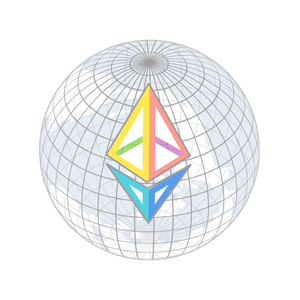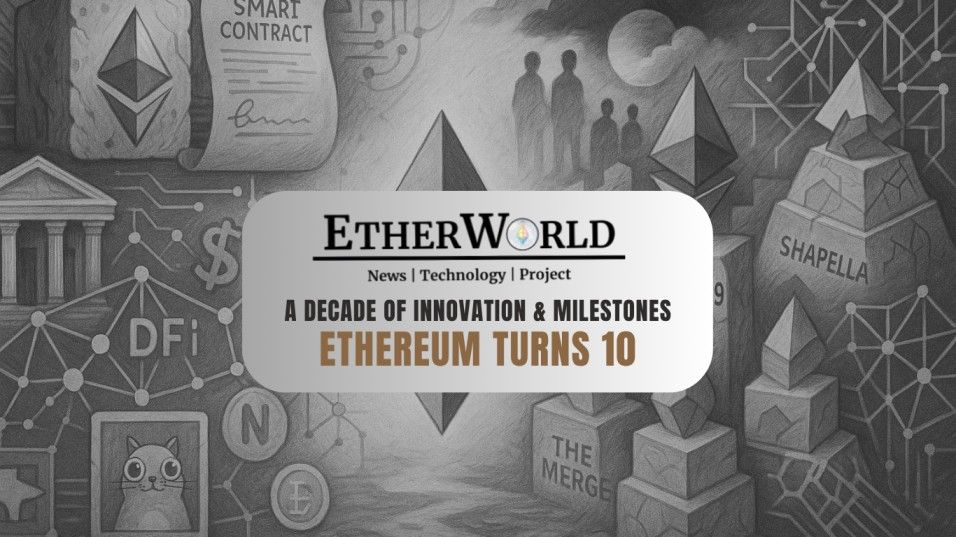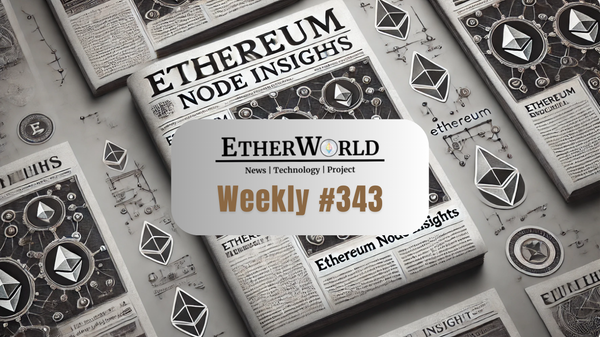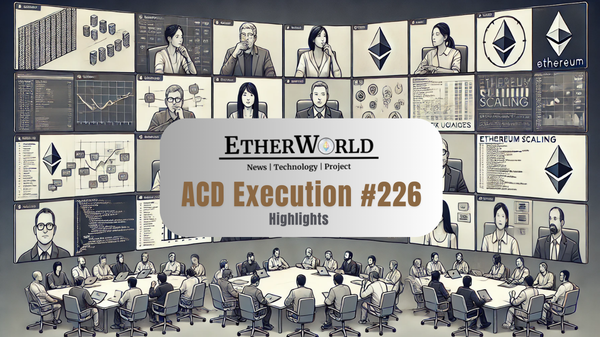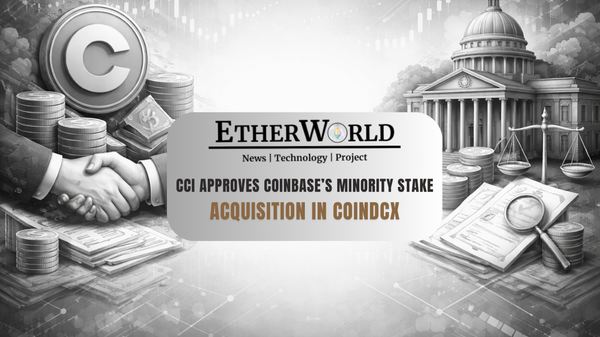A decade ago, on July 30, 2015, Ethereum’s Genesis block went live which started a new era of programmable money & decentralized applications. Since then, the network has weathered crises, major upgrades & powered entire ecosystems of DeFi, NFTs & more. To mark this 10-year milestone, we’ve distilled the top EtherWorld highlights across four key periods: 2015–2017, 2018–2020, 2021–2023 & 2024–2025. Dive in to relive the pivotal moments that have shaped Ethereum’s journey so far.
2015–2017
- Olympic Testnet Launch (May 7, 2015): The very first public Ethereum testnet, i.e., “Olympic” or “Ethereum 0.9” was launched to stress test the protocol under heavy adversarial loads, complete with a 25,000 ETH prize for finding forks. It uncovered crucial performance & security issues ahead of the mainnet debut.
- Frontier Mainnet Released (July 30, 2015): “Frontier” marked Ethereum’s official mainnet launch, enabling developers to deploy smart contracts & dApps live on chain and setting the initial block gas limit at 5 million, laying the foundation for the protocol’s upgrade & governance model.
- Homestead Hard Fork (Mar 14, 2016): Homestead introduced protocol improvements such as EIP 2 (difficulty bomb delay) and formalized transaction status codes, boosting network stability & security and signaling Ethereum’s shift from experimental to production grade infrastructure. Link
- DAO Crisis & Emergency Hard Fork (July 20, 2016): In response to a $50 million exploit of The DAO smart contract, the community executed an emergency hard fork to restore stolen funds, resulting in Ethereum (with the reversal) & Ethereum Classic (without), and setting a lasting governance precedent. Link
- Enterprise Ethereum Alliance Forms (Mar 2017): Over 30 industry leaders, i.e., JPMorgan, Microsoft & Intel, joined the Enterprise Ethereum Alliance to standardize & accelerate blockchain adoption for enterprise use cases, producing key specifications for permissioned & hybrid deployments. Link
- Byzantium Upgrade Goes Live (Oct 16, 2017): As the first half of Metropolis, Byzantium activated eight EIPs, including zk-SNARK support and gas cost reductions, enhancing privacy, performance & developer ergonomics and further delaying the difficulty bomb to keep proof of work viable pre-The Merge. Link
- CryptoKitties & ERC-721 Explosion (Dec 2017): The viral success of CryptoKitties, i.e., built on the new ERC-721 NFT standard, demonstrated Ethereum’s capacity for unique digital assets, sparking a surge of collectibles, gaming & art projects and driving mainstream NFT adoption.
- Parity’s OpenEthereum Revival (Dec 29, 2017): Parity Technologies rebranded its client as OpenEthereum, i.e., a fast, lightweight, community driven client with WASM support, ensuring continued client diversity & resilience into 2020 and beyond.
2018–2020
- Aya Miyaguchi Joins EF as Exec Dir (Feb 15, 2018): Aya Miyaguchi was appointed Executive Director of the Ethereum Foundation, bringing her deep experience from roles at Kraken Japan & the Japan Blockchain Association to strengthen EF’s research, community & ecosystem support.
- Constantinople & Petersburg Forks (Feb 28, 2019): Ethereum activated the long-awaited Constantinople & Petersburg hard forks at block 7,280,000, delivering five EIPs (e.g., EIP-145 bitwise shift opcodes, EIP-1052 extcodehash) to reduce gas costs & pave the way for ProgPoW & Eth2.
- Istanbul Upgrade (Dec 8, 2019): The Istanbul hard fork (block 9,069,000) brought six EIPs—improving Interop (BZ 2 precompile for Zcash), gas-cost tweaks (EIP-2028 & EIP-2200), and resistance to denial-of-service attacks—boosting performance & privacy for DeFi & dApps.
- Muir Glacier Delay (Jan 2, 2020): To counter Ethereum’s accelerating “difficulty bomb,” Muir Glacier (EIP-2384) postponed the Ice Age by ~611 days, stabilizing block times & buying the community time to finalize Eth2 merge preparations.
- Beacon Chain Genesis (Dec 1, 2020): Ethereum’s PoS Beacon Chain launched at genesis 0x000…000, introducing validators, attestations & the beacon consensus layer, i.e., kickstarting the multi-phase Eth2 roadmap toward full PoS & shard chains.
- EIP-1559 Proposal Deep-Dive (July 2020): The London upgrade’s centerpiece, EIP-1559, proposed a new “base fee” burn mechanism & dynamic block size to smooth gas fees, improve UX & make ETH partially deflationary, i.e., a landmark rethink of Ethereum’s fee market.
- Layer-2 Rollups Overview (Nov 2020): Amid rising gas costs, Rollups (Optimistic & ZK) emerged as leading Layer-2 scaling solutions—batching transactions off-chain & posting minimal data on Ethereum to boost throughput to hundreds of TPS while inheriting L1 security.
- DeFi Summer Recap (Aug 2020): Ethereum’s “DeFi Summer” saw TVL soar from $1B to $10B, with AMMs (Uniswap v2), lending markets (Compound, Aave) & yield farms (SushiSwap) driving composable innovation—and highlighting the need for scalable infrastructure.
2021–2023
- Berlin Hard Fork (Apr 14, 2021): The Berlin upgrade implemented four EIPs (2565, 2929, 2718 & 2930) to introduce access lists, a new transaction envelope type and optimized precompile gas costs, improving performance and reducing transaction fees.
- London & EIP-1559 Activate (Aug 5, 2021): The London upgrade’s centerpiece EIP-1559 introduced a base fee burn mechanism with dynamic block sizing, smoothing gas fees and making ETH partially deflationary over time.
- Altair Beacon Chain Fork (Oct 27, 2021): Altair activated light client support, reduced validator exit queue limits and added sync committee rewards to enhance Proof-of-Stake network security and client efficiency ahead of The Merge.
- Arrow Glacier Delay (Dec 9, 2021): Arrow Glacier (EIP-4345) postponed the difficulty bomb by approximately 5.6 million blocks to maintain consistent block times and ensure network stability as Ethereum prepared for its transition to PoS.
- Merge – Bellatrix & Paris (Jul 20, 2022): Bellatrix upgraded the Beacon Chain consensus layer and Paris triggered the Execution Layer fork at TTD 58750000000000000000000, successfully transitioning Ethereum from Proof-of-Work to Proof-of-Stake.
- Post-Merge EL Fork (EIP-2124) (Oct 7, 2022): This fork introduced an execution-layer fork identifier to ensure clients correctly recognize post-Merge consensus changes, enhancing network coordination and client compatibility.
- Shapella Withdrawals Go Live (Apr 12, 2023): The Shanghai (Execution Layer) and Capella (Consensus Layer) upgrade enabled on-chain withdrawals of staked ETH and implemented EIP-3651 to warm the coinbase for cheaper block rewards.
- Dencun & Proto-Danksharding (Mar 13, 2024): The Dencun upgrade combined Cancun and Deneb forks to introduce blob-carrying transactions and proto-danksharding, paving the way for scalable data availability solutions and lower calldata costs.
2024–2025
- Pectra Goes Live on Ethereum Mainnet (May 7, 2025): The Pectra upgrade merged Prague (Execution Layer) & Electra (Consensus Layer) forks, introducing EIP-7251 to raise the validator stake limit to 2048 ETH and EIP-7702 to add smart-contract capabilities to EOAs, boosting performance & validator flexibility.
- BEAM Consensus Research Call (Feb 17, 2025): The inaugural BEAM call reviewed early spec drafts, client-team alignments & performance benchmarks for Ethereum’s proposed Zero-Knowledge-friendly consensus overhaul, marking a key step toward modernising Ethereum’s consensus layer.
- Hoodi Launched (Mar 17, 2025): Ethereum’s new Hoodi testnet replaced Holesky to provide a stable, mainnet-like environment for Pectra testing, validator exits & staking ops, overcoming Holesky’s prolonged non-finality & exit-queue bottlenecks.
- Glamsterdam Upgrade Preview (Jan 9, 2025): Core devs outlined headliner EIPs, spec-freeze timelines & proposed 30-day audit windows for Glamsterdam, giving the first public look at Ethereum’s post-Fusaka feature roadmap.
- Sepolia History Expiry Test (Jun 1, 2025): The Sepolia testnet began on-chain history-expiry experiments to prune state older than one year, advancing Ethereum toward stateless architecture & sustainable node operation.
- Partial History Expiry Rollout (Jul 8, 2025): Geth, Besu & Nethermind implemented opt-in pruning under EIP-4444, slashing storage footprints by hundreds of GB and moving the network closer to stateless clients.
- Fusaka Devnet-3 Launch (Jul 15, 2025): Devnet-3 began its “happy-path” stress test with a 45 M gas limit, enabling devs to measure throughput, block-propagation latency & I/O bottlenecks under near-mainnet conditions.
Conclusion
Ten years on, Ethereum stands stronger than ever, i.e., a testament to relentless innovation, vibrant community support & the vision of a decentralized future. As we look ahead to the next decade: danksharding, broader real-world asset tokenization & even more powerful dApp, we celebrate not just technological milestones but the people behind them. Here’s to another ten years of pushing boundaries & making the blockchain dream a reality.
If you find any issues in this blog or notice any missing information, please feel free to reach out at yash@etherworld.co for clarifications or updates.
Related Articles
- Highlights of Ethereum's All Core Devs Meeting (ACDC) #153
- Highlights of Ethereum's All Core Devs Meeting (ACDE) #207
- Highlights of Ethereum's All Core Devs Meeting (ACDC) #152
- Highlights of Ethereum's All Core Devs Meeting (ACDE) #206
- Highlights of Ethereum's All Core Devs Meeting (ACDE) #205
Disclaimer: The information contained in this website is for general informational purposes only. The content provided on this website, including articles, blog posts, opinions, and analysis related to blockchain technology and cryptocurrencies, is not intended as financial or investment advice. The website and its content should not be relied upon for making financial decisions. Read full disclaimer and privacy Policy.
For Press Releases, project updates and guest posts publishing with us, email to contact@etherworld.co.
Subscribe to EtherWorld YouTube channel for ELI5 content.
Share if you like the content. Donate at avarch.eth.
You've something to share with the blockchain community, join us on Discord!
